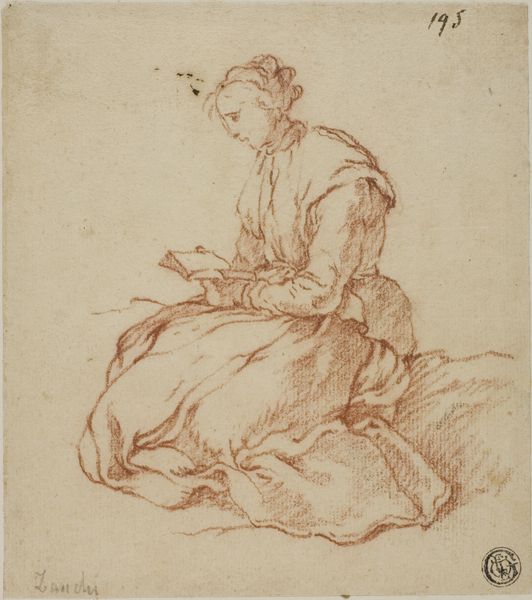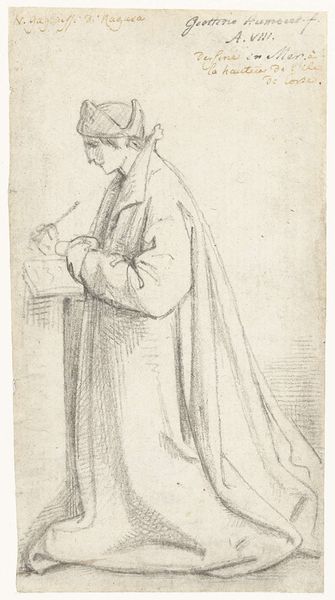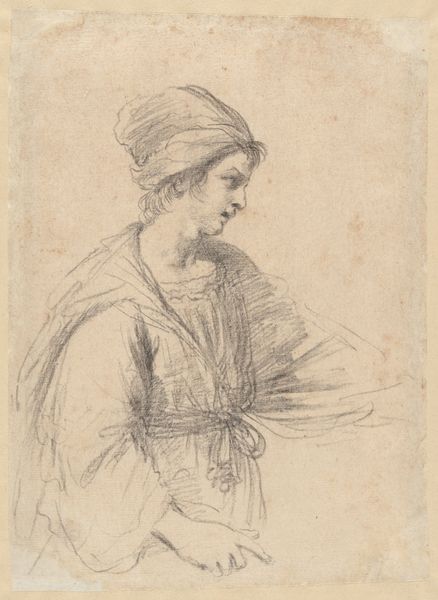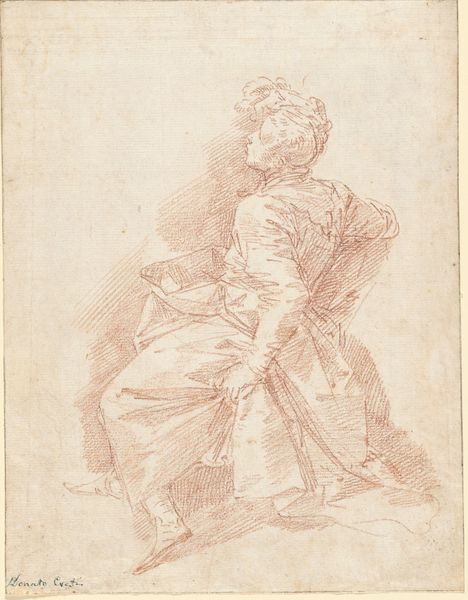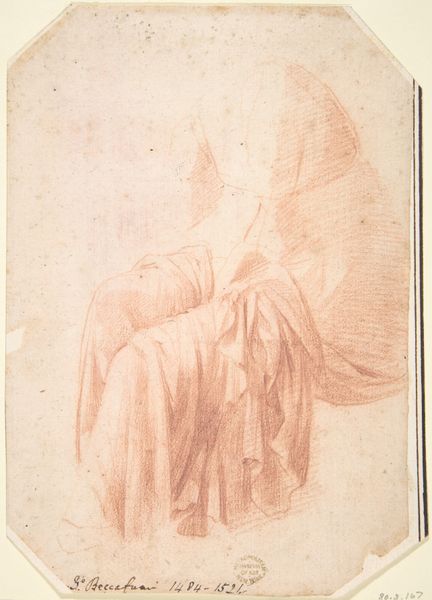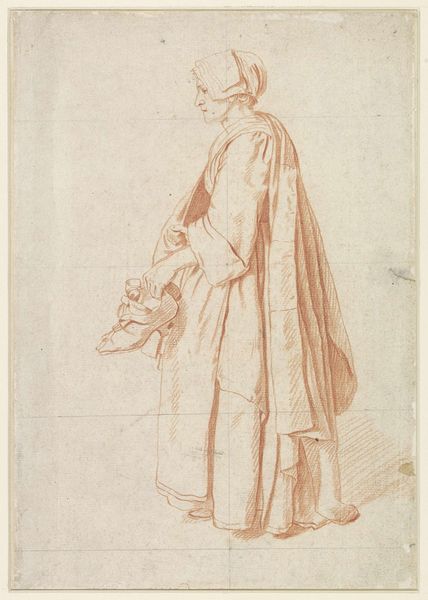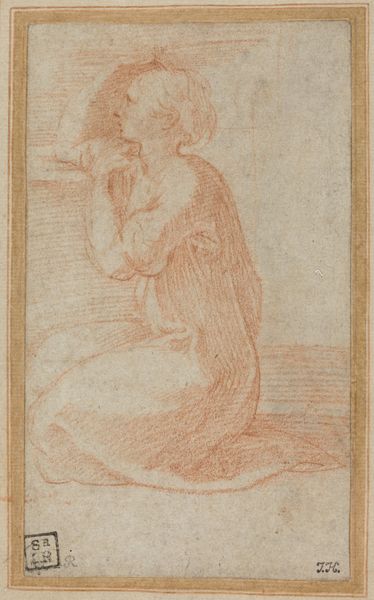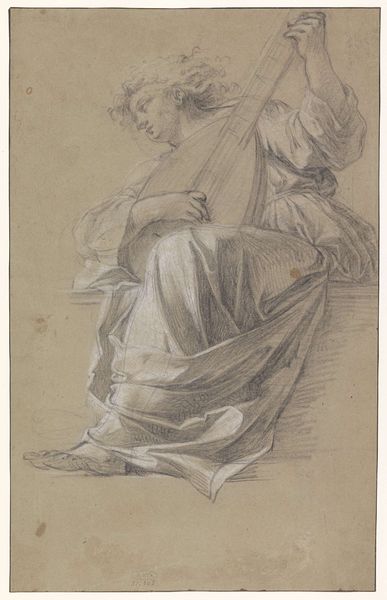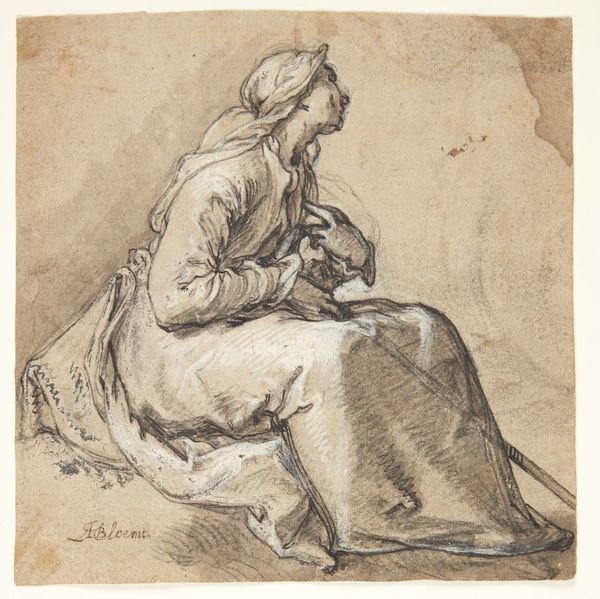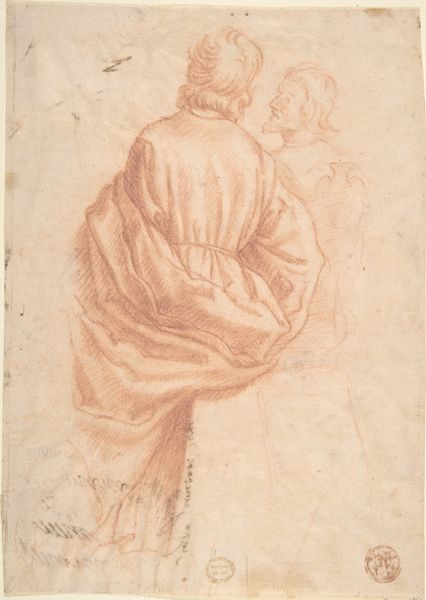
Cleric (lower register; study for wall paintings in the Chapel of Saint Remi, Sainte-Clotilde, Paris, 1858) 1825 - 1875
0:00
0:00
drawing, print, pencil
#
portrait
#
drawing
# print
#
figuration
#
pencil
#
history-painting
#
academic-art
Dimensions: 14 7/16 x 11 7/8 in. (36.7 x 30.1 cm)
Copyright: Public Domain
Editor: We’re looking at “Cleric,” a drawing in pencil by Isidore Pils, dating sometime between 1825 and 1875. It’s a study for a larger piece in the Chapel of Saint Remi. The sketch is simple and focuses on the figure—it makes me wonder, what exactly draws your eye in this composition? Curator: Primarily, I note the figure's precise rendering. Pils’ control of line and tonal variation allows him to create a sense of volume with minimal effort. See how the red chalk, almost sanguine in its hue, defines the drapery’s fall and contours, lending gravity to the pose of supplication. But do you perceive a tension in the unfinished nature of the background, juxtaposed with the complete rendering of the cleric? Editor: Yes, I see that! The blank space makes the figure seem isolated, heightening the sense of devotion, perhaps? Was this typical of academic studies at the time? Curator: Indeed. Academic studies often prioritize the figure, demonstrating mastery over anatomy and drapery before contextualizing it within a larger scene. Pils emphasizes the plasticity of the figure, foregoing background details. Ask yourself: what purpose is served by the suppression of the overall composition in favor of emphasizing anatomical accuracy? Editor: So it’s about the formal qualities themselves, the technique and structure of the image more than any narrative. I hadn't thought of it that way before. Curator: Precisely. We are encouraged to engage with Pils’ manipulation of line and form to discover the image’s significance, setting aside subjective interpretation. Editor: I see, focusing on Pils’ technique and how he represents form is more important here. Thanks, that gives me a new way to look at this type of sketch. Curator: My pleasure. It’s in these formal choices that an artist’s intent often reveals itself.
Comments
No comments
Be the first to comment and join the conversation on the ultimate creative platform.
